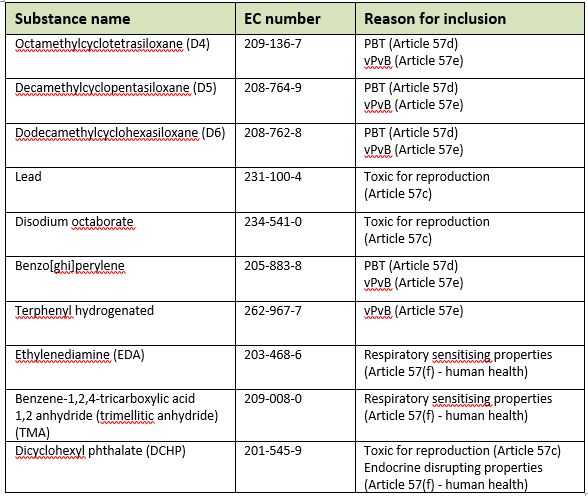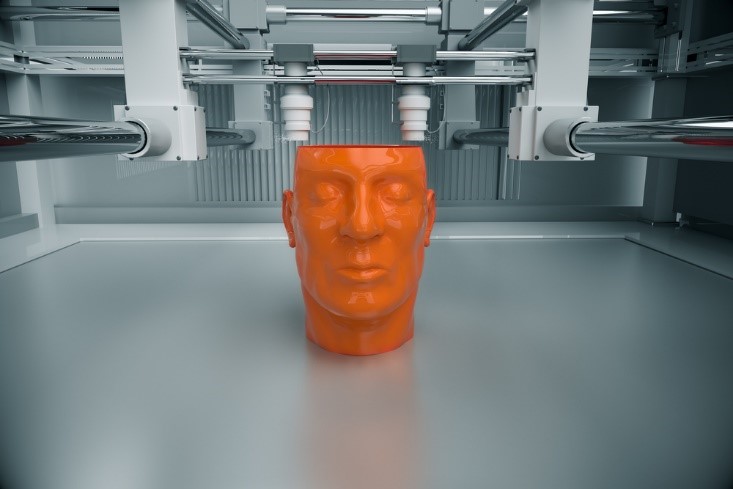We use cookies to personalize content and advertisements, to offer social media functions and to analyze access to our website.
You can revoke the given consent at any time. You can find further information in our Privacy Policy.
Oct 2018
On 23, Oct 2018 | In Conflict Minerals, News @en | By Alisa Maier
 The EU Commission published guidelines on the identification of conflict-affected and high-risk areas and other supply chain risks with respect to the EU Conflict Minerals Regulation 2017/821 on August 17, 2018.
The EU Commission published guidelines on the identification of conflict-affected and high-risk areas and other supply chain risks with respect to the EU Conflict Minerals Regulation 2017/821 on August 17, 2018.
Although not legally binding, the guidelines are designed to help EU importers carry out their supply chain due diligence.
The overall objective of the EU Conflict Minerals Regulation, which is based on the principles set forth in the OECD Guidance, is to enable the development of secure, transparent and verifiable supply chains of minerals. Moreover, the aim is to ensure responsible import practices of minerals and metals from conflict-affected and high-risk areas into the EU, without contributing to armed conflict and associated human rights abuse.
Oct 2018
The Saudi Standards, Metrology and Quality Organisation (SASO) published its Board Decision 12922, subject of General Energy Efficiency and Safety Requirements in the Official Gazette on August 24, 2018.
Technical Regulation 12922 supersedes the older version, number 946 published on October 14, 2016. The changes mainly affect the energy efficiency label and the content of annex (1) of the regulation. The said annex contains a list of obligatory technical standards, some of which had already been obligatory and in force prior to the publication of the technical regulation (12922).
Annex (1) of the regulation will be updated regularly by SASO.
Oct 2018
The European Chemical Agency (ECHA) published an update of the Candidate List under REACH on June 27, 2018: Ten new Substances of Very High Concern (SVHC) were added to the list. The Candidate List of SVHCs for authorization has gone up to 191 substances.
 The use of a Substance of Very High Concern in an article may require information obligations according to Art. 33 and notification obligations according to Art. 7.
The use of a Substance of Very High Concern in an article may require information obligations according to Art. 33 and notification obligations according to Art. 7.
Link to ECHA’s Website: www.echa.europa.eu/-/ten-new-substances-added-to-the-candidate-list
Sep 2018
Businesses selling EEE across Europe face considerable change regarding the requirements under the WEEE Directive 2012/19/EU. From August 15, 2018, all EEE in scope of the Directive have to be classified according to the new categorization. Furthermore, the ‘open scope’ encompasses further products under the EEE definition and thus these are subject to WEEE obligations.
In order to help companies to understand these changes throughout this transition period, 1cc will organize a webinar in September 2018.
Gerli Wacowski, Consultant/Compliance Professional at 1cc GmbH, will provide an insight into the main consequences and updates about WEEE Open Scope. The webinar will include examples of implementation in selected countries in the EU.
Title: WEEE Open Scope in EU: Consequences and Updates
Date: September 20, 2018, 2:00 PM – 3:00 PM CEST
Language: English
Registration Link: https://attendee.gotowebinar.com/register/4255692034133907715
PS: Participation in the webinar is free of charge. However, the number of participants in the webinar is limited to 20 attendees.
Aug 2018
On 27, Aug 2018 | In Copyright Levies, News @en | By Alisa Maier
Since 2016, there are ongoing negotiations to amend the EU Directive 2001/29/EC, which is the legal basis for copyright levies. The outcomes of the negotiations, which are intended to expand and modernize this legislation, are until now reflected in a draft under the name “Copyright in the Digital Single Market”. To continue negotiations, one of the two major issues in the discussions that will take place at the beginning of September will be copyright levies with regard to technological innovations. The notion of applying copyright levies to internet platforms that can reproduce protected work will be under consideration.
O n this background, 3D printers with the obvious potential to reproduce protected works are also considered as devices subject to copyright levies. The technological developments in 3D printers have repeatedly triggered discussions about the issues of copyright law and more precisely around copyright levies. Czech Republic and France are among the many countries thriving such discussions. Furthermore, a study conducted by the WIPO (World Intellectual Property Organization) in 2015 deals with the questions at stake.
n this background, 3D printers with the obvious potential to reproduce protected works are also considered as devices subject to copyright levies. The technological developments in 3D printers have repeatedly triggered discussions about the issues of copyright law and more precisely around copyright levies. Czech Republic and France are among the many countries thriving such discussions. Furthermore, a study conducted by the WIPO (World Intellectual Property Organization) in 2015 deals with the questions at stake.
In general, the EU Parliament considers the impact of 3D printers as important, evaluating potential copyright infringements of authors and artists. Therefore, EU Parliament approved the Resolution 2017/2007 (INI) with the intention to regulate innovative products such as 3D printers by copyright law. Moreover, this resolution proposes that similar products, such as 3D printers and normal printers – 2D printers are subject to copyright levies in many countries – should be regulated by the same legal basis.
Jul 2018
On 19, Jul 2018 | In News @en | By Alisa Maier
 Sylwia Patron-Ravidà joined the 1cc team as a Consultant with focus on WEEE, Batteries and Packaging compliance issues in March 2018.
Sylwia Patron-Ravidà joined the 1cc team as a Consultant with focus on WEEE, Batteries and Packaging compliance issues in March 2018.
Sylwia holds a master’s degree in political science from Maria-Curie-Skłodowska-University in Lublin, Poland, and is currently in the final stages of her doctoral studies at the Graduate School of Politics at University of Münster.
Sylwia has a three years’ teaching experience at the Institute of Political Science in Münster. Before, she worked as a consultant at a Polish consulting firm specialized in the field of economic and innovation policy and at a German consulting company providing its clients with a wide range of services, covering the whole lifecycle of cross-border projects.
Jul 2018
The first batch of electrical and electronic product types which must comply with China RoHS II Regulations, was published by the Ministry of Industry and Information Technology (MIT) on March 15, 2018 (Announcement No. 15 of 2018).
Importers and manufacturers of the listed products now have a one-year timeline to ensure compliance with the China RoHS II-requirements. From March 12, 2019 on, the 12 product types are subject to substance restrictions, labelling and information requirements, and the rules shall apply to products sold and manufactured in China and to imports to the Chinese market.
Compared to EU RoHS, the product scope is rather limited and contains 39 exemptions. However, concerning concentration limits of substances in products, manufacturers and importers of finished products will be required to implement a conformity assessment system – detailed requirements on this system are expected to be published by the state within the near future. In addition, suppliers of parts and components are affected by the regulation, as requests for information on substances are expected to be forwarded upstream from manufacturers and importers to the suppliers.
1cc will monitor the changes and requirements closely.
Jul 2018
Businesses affected by the WEEE Directive 2012/19/EU have to adapt to considerable changes in the near future: starting August 15, 2018, all EEE within the scope of the Directive has to be classified according to the so-called ‘open scope’.
Firstly, the 10 current EEE categories will be replaced by six new categories listed in Annex III of the WEEE Directive. As of the open scope period, any equipment that falls under the definition of EEE as set out in Article 3 (1) (a), is in scope.
Secondly, several national compliance schemes and authorities in various EU countries are already working on a new structure that will consequently affect:
– Registration categories (i.e., registration adjustments needed)
– Declaration categories (i.e., several sub-categories)
– Price lists of compliance schemes
As we know today, the requirements vary in the different EU Member States. Thus, the producers will continue to face complex WEEE fulfilment obligations due to the lack of harmonization (i.e. several sub-categories) amongst the different national compliance schemes.
Want to learn more about the open scope and the implementation status in the EU countries? 1cc offers a next webinar reference to WEEE Open Scope in September 2018. Exact webinar date will be published on our website soon.
Jul 2018
The final deadline for substance registration under REACH of May 31, 2018 was a mere deadline for registering a specific tonnage band. However, other obligations under REACH will remain unchanged.
These include, for example, authorization of substances as well as information requirements in the supply chain. The REACH Candidate list has to be monitored in this regard. New substance restrictions have to be considered, too.
Regarding registration, there are also tasks concerning all existing registration dossiers, as they are to be maintained and kept up to date. Besides, the registrants should take time after having submitted registration dossiers to finalize the cooperation with co-registrants and initiate, for example, a cost check of Letter of Access (LoA) or discuss conditions of data sharing in the future.
Finally, the registration deadlines were set for already existing substances on the market, but the chemical industry is a very dynamic field where new substances could be created and will have to be registered as well.
For more information on REACH, please contact us: info@1cc-consulting.com.
Jul 2018
The four Directives known as the “Circular Economy Package” were published in the EU Official Journal on June 14, 2018. They entered into force on July 4, 2018. From that date, Member States will have two years to transpose the rules into national legislation.
The Directives amend the following Directives of European waste legislation:
• Directive 2008/98/EC on waste
• Directive 94/62/EC on packaging and packaging waste
• Directive 2006/66/EC on batteries accumulators and waste batteries and accumulators
• Directive 2012/19/EU on waste electrical and electronic equipment
• Directive 2000/53/EC on end-of-life vehicles
• Directive 1999/31/EC on the landfill of waste
The new legislation strengthens the “waste hierarchy”, i.e. it requires Member States to take specific measures to prioritize prevention, re-use and recycling above landfilling and incineration, thus making the circular economy a reality.
Besides increased waste avoidance, higher recycling rates are foreseen: For example, the rates for packaging waste shall increase as follows: From 2025, 65% and from 2030, 70% will be recycled. A recycling rate of 50% will apply to plastic packaging until 2025. A rate of 55% applies until 2030.
Furthermore, there will be reuse targets for textiles, used electrical equipment and bulky waste. By 2025, 5% should be reused, by 2030 at least 15%.
The rate of reused sales and transport packaging placed on the market must also be increased.